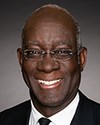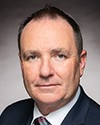Thank you, Mr. Chair.
Again, I apologize for not being able to be there in person. It's so good to see people in person again.
It's my real pleasure to be here on behalf of the Aerospace Industries Association of Canada.
I appreciate your time and the committee's interest in this important topic. As you may know, our industry employs a significant number of veterans from the Canadian Armed Forces. It makes me especially proud, personally, when I visit member companies, to see the number of veterans employed in the industry, so any actions you can take to help support this are greatly appreciated.
By way of background, our members represent over 90% of aerospace activity in Canada, spanning the civil, defence and space sectors. In 2021, Canada's aerospace industry contributed over $24 billion in GDP and close to 200,000 jobs to the Canadian economy. These are highly skilled, well-paying jobs in every region of the country. The industry is an important sector in regions across Canada, driving innovation, creating jobs and promoting economic growth.
However, we're facing a significant challenge in getting the right talent to meet the demands of a rapidly evolving market and rapidly changing technological advancements. Our industry relies heavily on skilled labour, from engineers and technicians to machinists and assemblers. There is a growing gap between the number of jobs available and the number of qualified workers to fill them. I'm sure you're hearing this from a lot of industries. This is due to a combination of factors, including the retirement of experienced workers, the increasing demand for skilled labour across the board and the need for further workforce development and training programs.
On the training side, we recently had some good news. As part of the recent Canadian Aerospace Summit, the government announced an investment of $39 million under the sectoral workforce solutions program for the Canadian Council for Aviation and Aerospace, which specializes in such training. Over 900 new and current aerospace workers across Canada will benefit. We're pleased to be working closely with them on this important initiative and very appreciative of that investment. It is meeting both the sustainability imperative and, simultaneously, Industry 4.0 requirements for new skills and training.
In its 2021 study of Canada's aerospace industry, the House of Commons Standing Committee on Industry and Technology called out the need for the federal government to collaborate with provinces and territories to fund post-secondary training across all aerospace sectors. The industry is competing with other countries to attract the best talent, and we need to ensure employers can attract the workers they need. Getting talent back, or finding new sources, is both an opportunity and a challenge for the industry. Estimates say we require an additional 58,000 workers in key skilled roles by 2028. We have a real opportunity, now and moving forward, to get things right, and I'm very pleased to see this committee prioritizing a study on a national strategy for veterans employment after service.
Utilizing the talent we have—talent that is ready to be put to work—is critically important. Our industry welcomes the skills, knowledge and experience of veterans; it's a natural fit. Many of our member companies employ veterans, as I said at the outset. At our national association, we are fortunate to have two extremely accomplished military veterans among our ranks. Both are former brigadier generals. They are now providing invaluable expertise to our members through their work with our association and leadership on our technical committees. The breadth of knowledge veterans provide is something that only comes from the unique experiences they bring.
In conclusion, labour market challenges in the aerospace industry are significant, but they are not insurmountable. Ensuring we're utilizing the talent and experience of our veterans is something we fully support. I think we all share the goal of ensuring this important industry continues to thrive and provide exciting, well-paying careers for generations to come, while benefiting from the experience, talent and knowledge of our country's veterans.
Again, thank you for your interest. I would be happy to answer any questions you may have.



